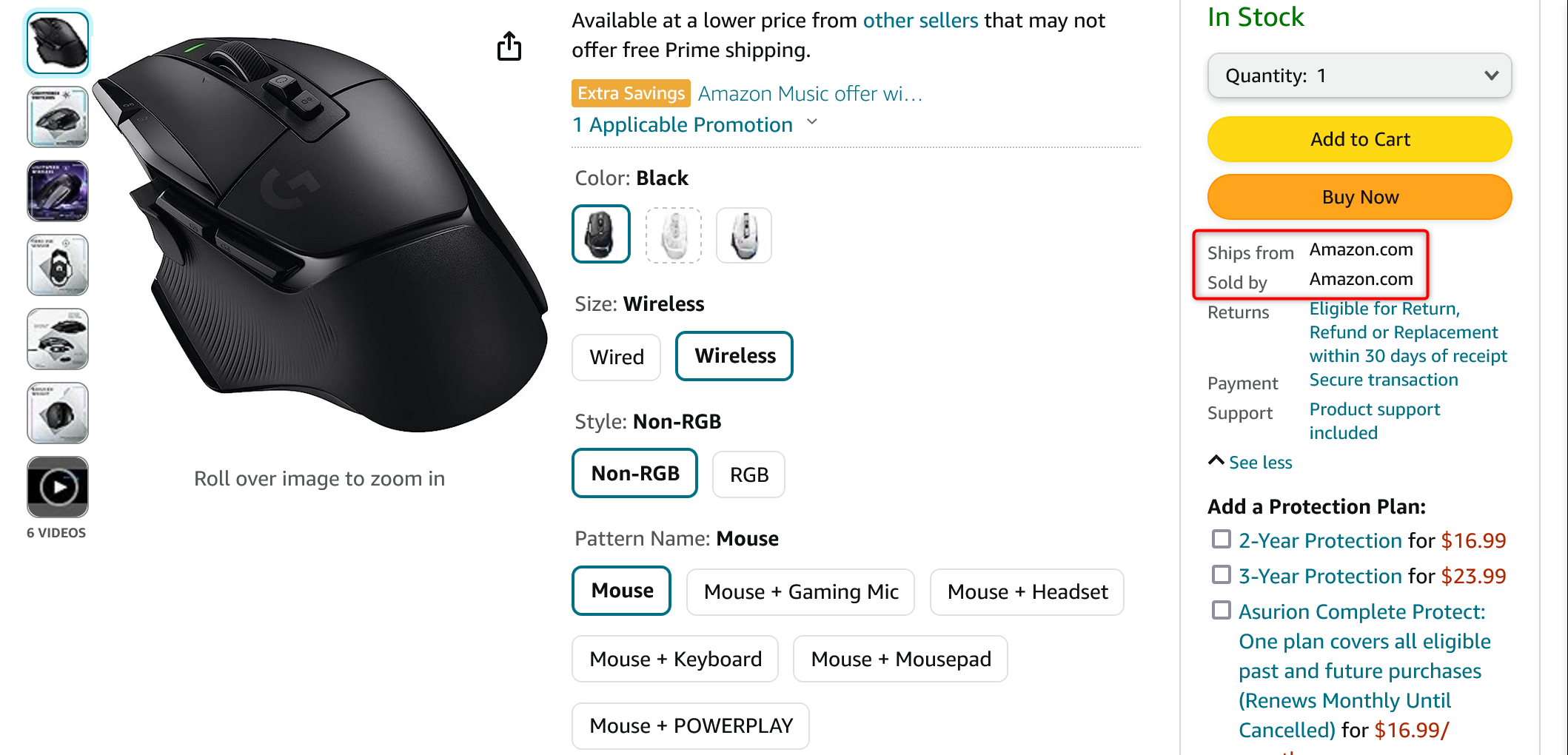
Investigating Reports of Receiving Open-Box Goods From Amazon Marked as Brand New

Investigating Reports of Receiving Open-Box Goods From Amazon Marked as Brand New
Key Takeaways
- Amazon often resells returned items as new, if they pass inspection—though this isn’t always reliable.
- Shop for items both sold and shipped by Amazon to reduce your chances of receiving a used product.
- Contact Amazon if your purchase isn’t new. They usually resolve issues quickly, but don’t abuse the policy.
With increasing regularity, I’m buying brand-new products directly from Amazon and they arrive in used condition. If you’re a regular Amazon shopper, it’s probably happened to you, though you may not have realized. But why is this happening? And can we do anything about it?
My Experiences of Buying New and Receiving Used
Recently, I bought a new computer mouse from Amazon—a reasonably expensive Logitech one. When it arrived, the mouse was loosely slung in the Amazon box alongside a cable. Obviously, this isn’t how the mouse is meant to be packaged; it should come in a Logitech box, for starters. The mouse had clearly been used previously, with scratches on the bottom and grime on the buttons.
This might be more understandable if I’d bought the mouse from some poorly reviewed third-party seller with lax quality control (I’m always cautious to avoid scammy Amazon sellers ), but it was shipped and sold by Amazon directly.

I contacted Amazon support and asked how this happened. The representative couldn’t say, beyond branding it a “mistake”, and immediately shipped out a replacement and told me to keep the used mouse. Thankfully, the replacement arrived promptly new and sealed, but ultimately the incident delayed me receiving the product in the condition I ordered.
I can’t fault the customer service here—issues are always easily resolved. But this shouldn’t happen in the first place, especially as Amazon says it wants to be “Earth’s most customer-centric company.” I want to buy something new and not have to question it.
This isn’t the first time I’ve had this problem. I’ve received a used hard drive, book, pack of playing cards, and more. It’s perhaps more forgivable for the cheaper purchases, but not for expensive tech. Anecdotally, looking at community forums like Reddit, it’s happening more frequently too—though it’s by no means a new phenomenon, as a thread on HardForum shows people complaining about this in 2011.
Why Is Amazon Selling Used as New?
This is happening partly by design, in accordance with Amazon’s return process . In a 2022 Amazon article , the company explains that most returns are resold as new:
Returned items are put through a detailed inspection process, and if the product meets our high-quality standards, the item is tagged as “new” and is re-listed for sale. Most returned products meet this bar and are put back on our digital shelves for other customers.
A 2024 Amazon article expands on that, detailing that the inspection process includes evaluating the packaging and product for any signs of use or damage. Anything that doesn’t meet quality expectations is routed elsewhere, like being sold used through Amazon Warehouse .
Despite these public assurances, anyone reviewing my mouse could see it wasn’t in new condition. One explanation for this is the vast number of returns Amazon deals with—perhaps its employees are pressured to process them quickly, leading to mistakes or a lackadaisical approach.
According to a 2023 report by the National Retail Federation , 14.5% of sales by the US retailers studied (not specifically Amazon) result in a return. As a percentage of total returns, 13.7% are fraudulent. These staggering figures make me appreciate why retailers want to resell something used as new.
Can You Do Anything to Stop Receiving Used Products?
You might think that the way to avoid this problem is to stop shopping on Amazon, but this isn’t a uniquely Amazon issue; every retailer has to deal with returns, and many take a similar approach to Amazon. Besides, while Amazon has plenty of other faults, its speedy shipping and low prices are hard to turn down.
As such, make sure what you buy is both sold and shipped by Amazon. That doesn’t guarantee success, as I found out, but it does increase your chances. If you do opt for a third-party seller, know that Amazon’s A-to-z guarantee still protects you.
As soon as you receive your purchase, check for any signs of use. Look for a label stuck to the product packaging that begins with “LPN”. This is a serial number that usually indicates the product has been reprocessed by Amazon. This can mean a few things, like that it was returned by the courier as undeliverable, but in most cases it’s been opened by someone and probably used.
If you’re not satisfied with the quality of your purchase, contact Amazon immediately and they are likely to resolve it for you. Just don’t abuse this because your account will be investigated if you return an abnormal amount.
Should You Keep Shopping on Amazon?
It’s a little wearing to wonder, “has someone else used this?” every time I open an Amazon parcel. As a result, it’s made me cautious about what I order. Anything expensive or important, especially electronics, I get directly from the manufacturer. Hygiene products are supposedly not returnable with a broken seal, but I still get these elsewhere too.
Otherwise, I’m happy to keep shopping on Amazon and using the Prime benefits for now. Whether you feel the same is your decision. You may have never ordered something new and received it used—long may that continue!
Also read:
- [SOLVED] Minecraft Won't Launch in Windows
- [Updated] Tender Tracks Ideal Music to Accompany a Lifelayer Change
- Guía Paso a Paso Sobre Cómo Transformar Tu Vídeo 3GP en Un Formato MOV Sin Coste Alguno Con Movavi Online Video Converter
- How to Track WhatsApp Messages on Infinix Note 30 Pro Without Them Knowing? | Dr.fone
- In 2024, Uncomplicated Video Snip for Win10 Users
- Movavi의 비용 없는 사이트에서 원활한 MXF 데이터를 MP3로 변환: 단계별 지침
- No Cost File Transformation by Movavi - Easily Change MP4 Audio/Video to WMA
- Screen Capture Showdown Is OBS Better Than Fraps for 2024
- The Unbeatable Appeal of Tangible Tape Rentals Vs. Intangible Online Movie Streaming Options
- Top 18 Methods for Converting MP4 Files Into DVD Format on Windows, Mac, and Via Web Services
- Title: Investigating Reports of Receiving Open-Box Goods From Amazon Marked as Brand New
- Author: Christopher
- Created at : 2024-12-31 06:54:20
- Updated at : 2025-01-03 08:31:04
- Link: https://some-approaches.techidaily.com/investigating-reports-of-receiving-open-box-goods-from-amazon-marked-as-brand-new/
- License: This work is licensed under CC BY-NC-SA 4.0.